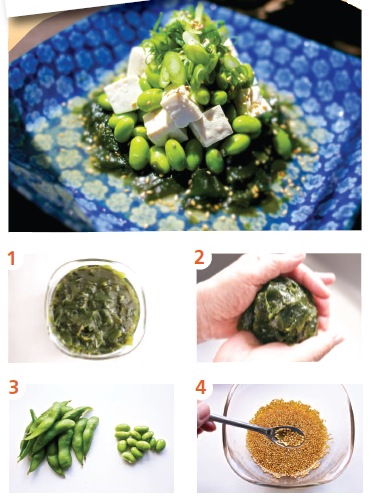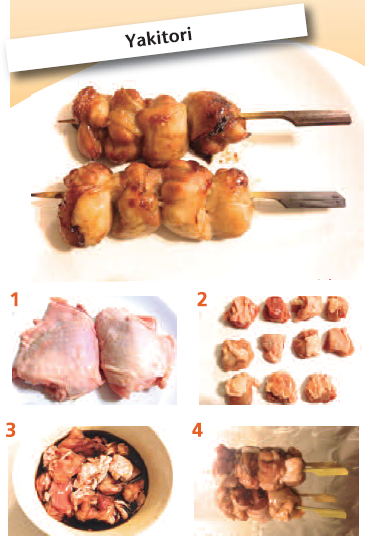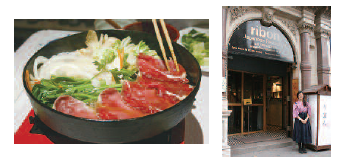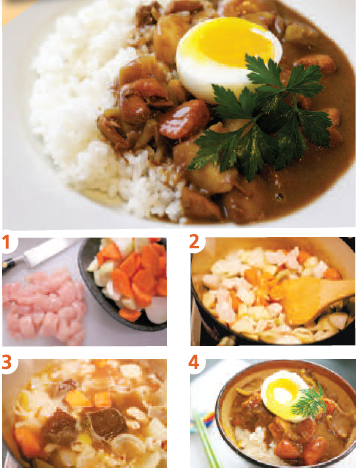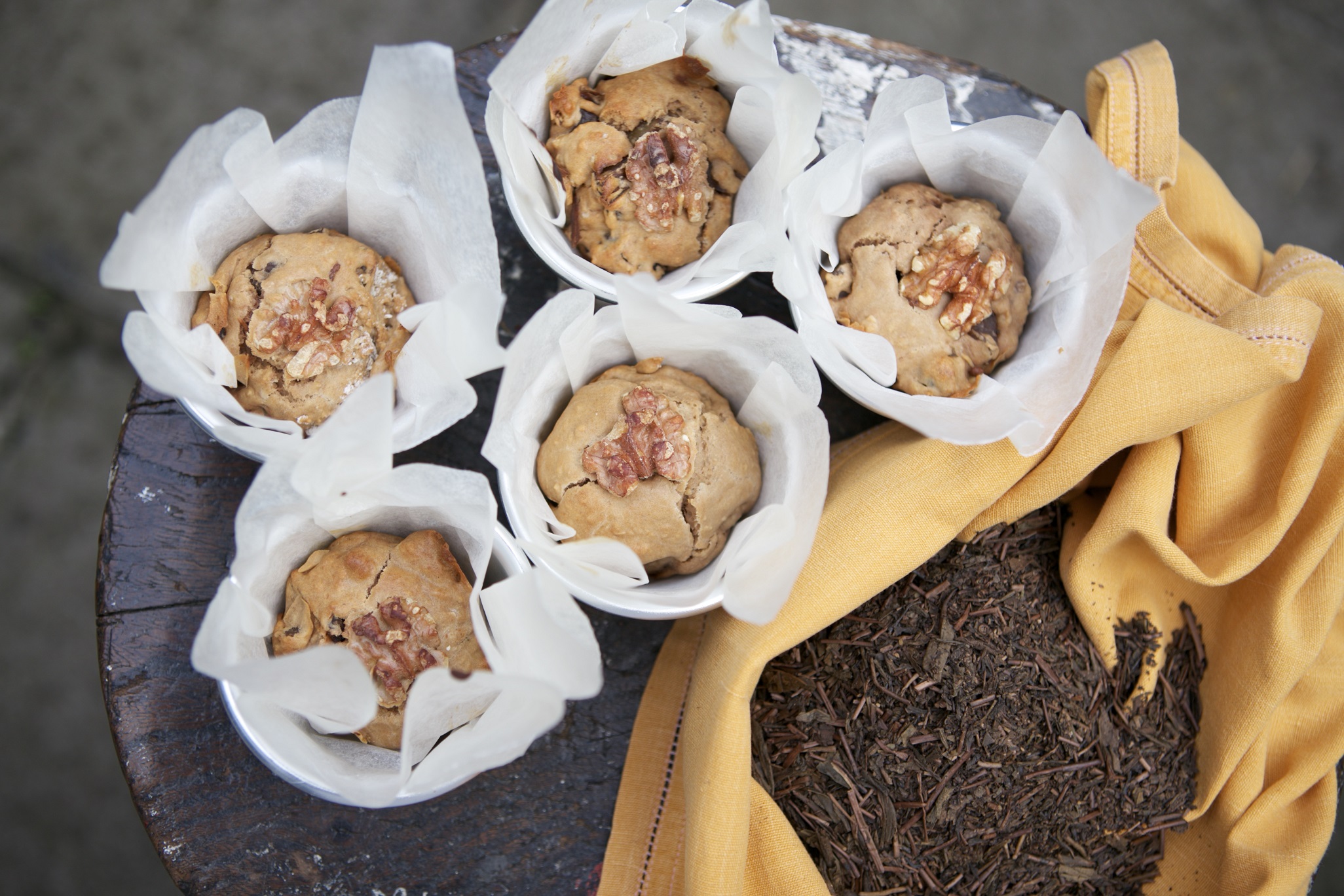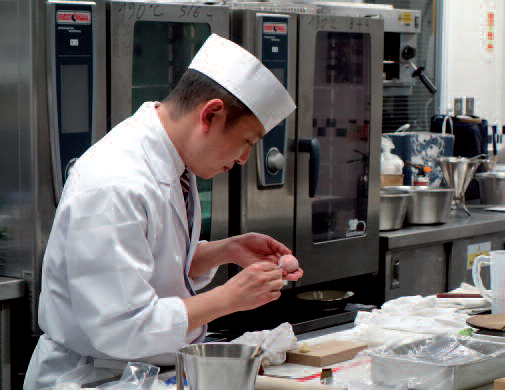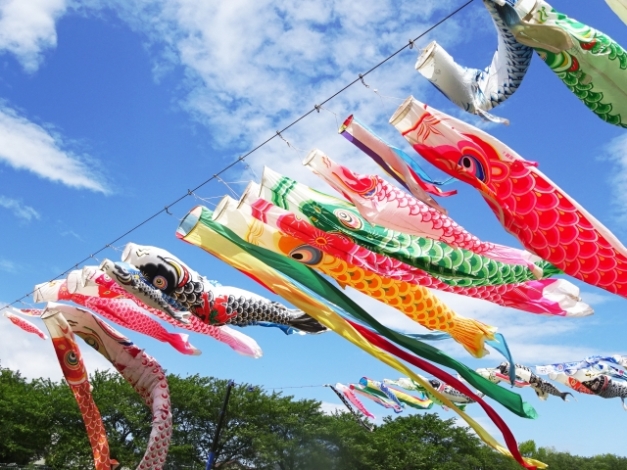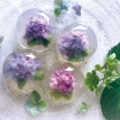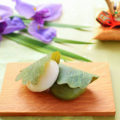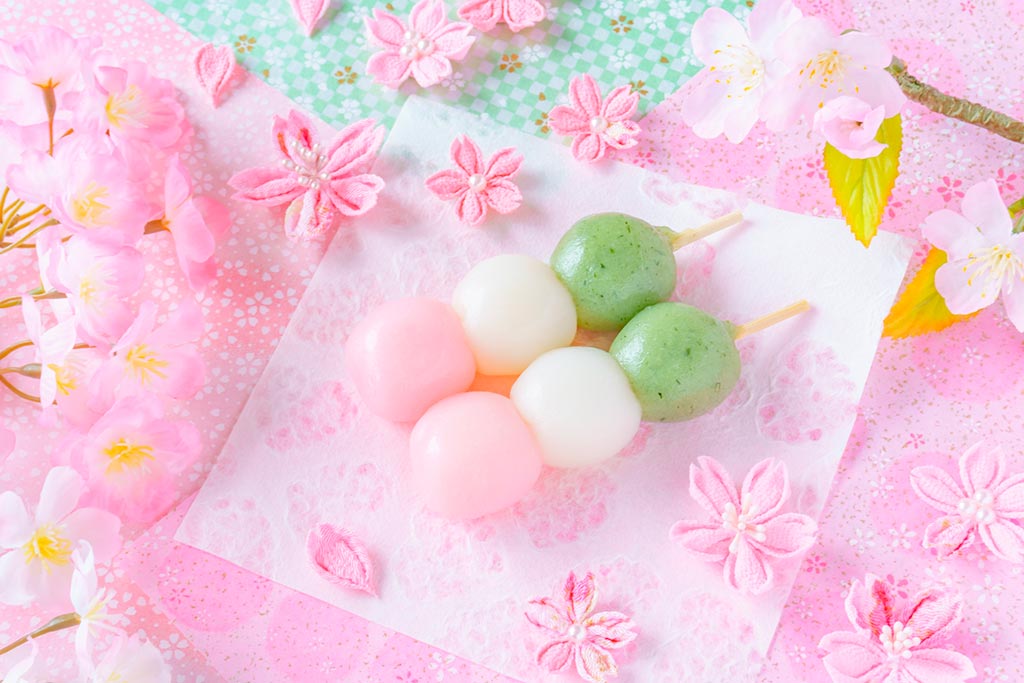

It’s still cold, but it’s already spring on the calendar. Daffodils and crocuses are begin to bloom, signalling the next season’s arrival. However, aren’t the cherry blossoms the spring flowers that Japanese people are most looking forward to?
Japanese sweets that always appear when you enjoy cherry blossoms are hanami dango (hanami means cherry blossom viewing in Japanese). So I would like to talk about hanami dango which has been enjoyed for many years with cherry blossom viewing.
What is hanami dango?
Hanami dango are pink, white, and green dango that are on a single skewer. Therefore, it is sometimes called “three-colour dango”. Dango and mochi are Japanese sweets made from rice, and the difference is in the ingredients, how to make them, and how they are called in each region. However the definition may not always be clearly distinguished.
How did the custom of eating hanami dango while viewing cherry blossoms start?
Sakura is synonymous with cherry blossom viewing. In the first place, it seems that the custom of cherry-blossom viewing has been around for a long time, and in 812, it is mentioned in Nihon Shoki that cherry-blossom viewing had already been done during the time of Emperor Saga. It is said that it was Toyotomi Hideyoshi who created the opportunity for cherry-blossom viewing with food as it is today.
In 1598, Hideyoshi hosted a luxurious blossom-viewing party in Kyoto, known as the “Daigo no Hanami”. The meals served were gorgeous, and there was a selection of famous sake from all over the world, as well as beautiful and unusual ones. The three-colour dumplings were served as tea confectionery at this time.
As a result of this, the custom of three-colour dango became widespread nationwide in cherry blossom viewing, and became popular among the common people in the Edo period.
What do the three colours of the dango mean?
The standard colours for hanami dango are pink, white and green, but it seems that these colours also have a meaning. There are several theories. It represents:

1. Seasons
Pink: the colour of cherry blossoms, signifying spring
White: the colour of snow, signifying winter
Green: the colour of fresh green, signifying summer
2. Spring
Pink: sakura, sun
White: shirozake (type of sake), remaining snow
Green: spring greens
It is said that the dango express the appearance of spring when the snow begins to melt in the warm sunlight, the green buds and the cherry blossoms begin to bloom. There is respect for nature, and it is a very Japanese aesthetic and way of expression.
3. Good Luck
Pink: a colour that brings luck
White: a colour that represents cleanliness
Green: a colour that dispels evil
They are all happy colours, so it seems to mean good luck food. It makes me feel happier just by eating them.
What is the meaning of the order of the three-colour dango?
The order in which the three colours of hanami dango are lined up is also fixed. I don’t think you can see the three-colour dumplings arranged in the order of pink, white, and green from the top.
There are two theories about the order of the three-colour dango.
1. It shows how the cherry blossoms bloom
The theory is that after the red buds are attached, the white flowers bloom, and after the flowers are scattered, the green leaves grow.
2. It represents the land of early spring
The theory is that it represents the state of the earth where the sun is still in the sky, a little snow remains, and fresh green is sprouting under the snow. The expression of the long-awaited spring is very tasteful and Japanese-like, isn’t it?
The taste of hanami dango
The three colours of hanami dango have different flavours. The ones that are generally sold at supermarkets have the same taste because they are only coloured with food colouring and natural pigments. However, some Japanese sweets shops have their own special flavours.
Pink: sakura, or shiso flavours
White: yuzu flavour or plain
Green: mugwort or matcha flavours
It’s fun to compare the differences.
Let’s eat hanami dango at cherry-blossom viewing in Japan♪
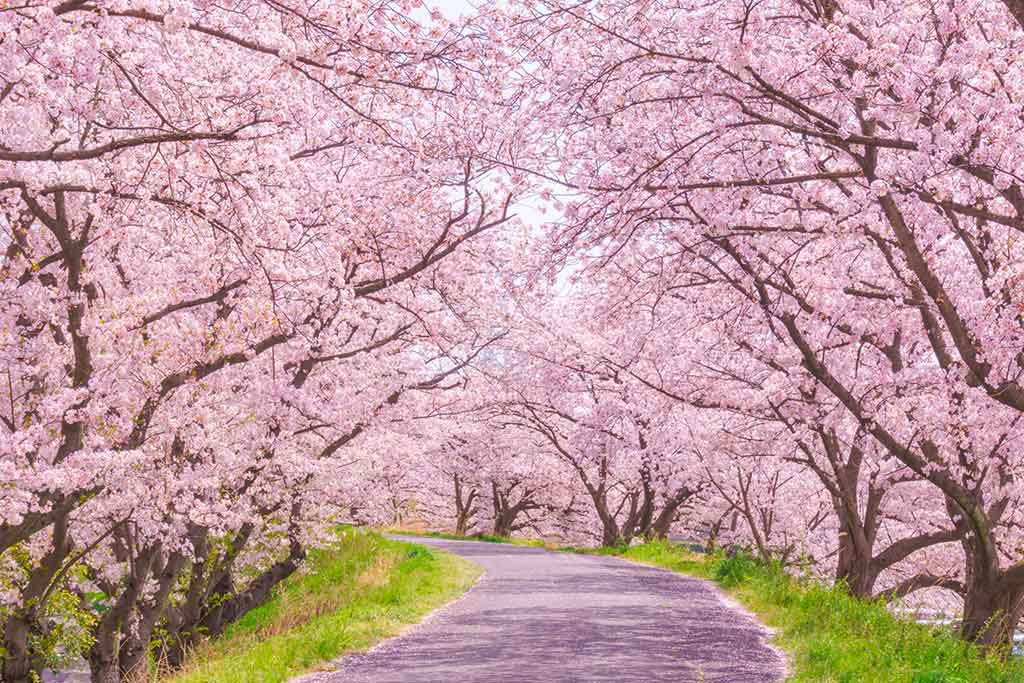
We learned hanami dango has a fascinating origin and deep meaning. When you go to see the cherry blossoms, why don’t you enjoy hanami dango while thinking about their history and unique meaning?
YURI LEE
www.instagram.com/wagashi_art_uk/
www.instagram.com/wagashiinbloom/
www.wagashiart.com/

